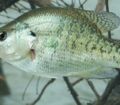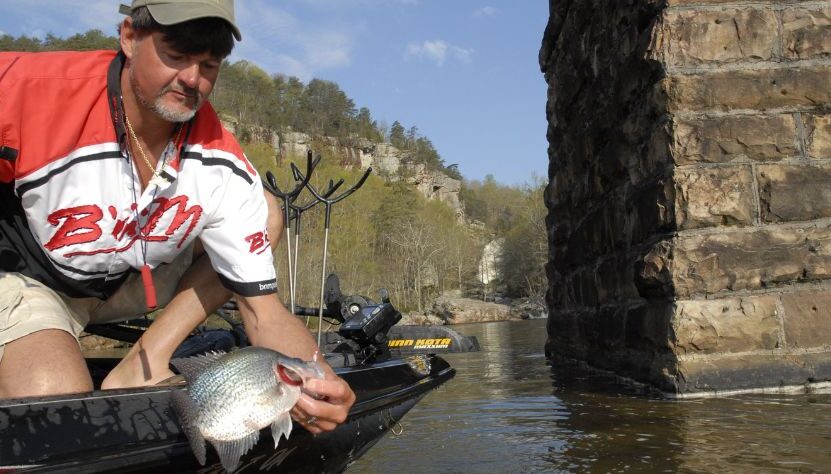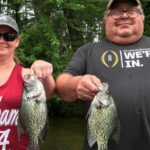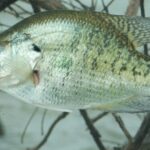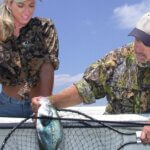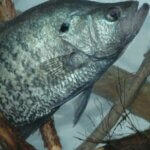Editor’s Note: To find a bank-bound crappie, you must know the temperature of the water. Forget about the time of year. When the water temperature becomes warm enough for crappie to spawn, they will move to the bank. With a not-just-right water temperature, the crappie will pull away from the bank. Throughout April and perhaps even May, various sections of the South may experience unexpected cold fronts that will cause the crappie to swim away from the bank.
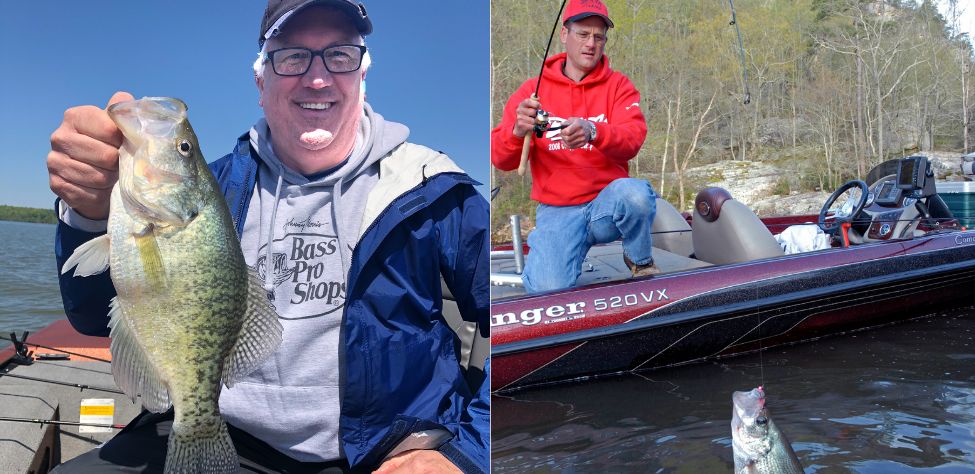
The late Steve Pope of Centre on Alabama’s Weiss Lake taught me that a 2- or a 3-degree difference in water temperature would cause the crappie to concentrate in certain creeks and not in others. The warmer creeks had more crappie; the cooler creeks had fewer crappie. The time of day also affected the shallowness of the crappie. Early in the morning, we caught crappie in 8 feet of water, but by 1:00 p.m., we took crappie in 1-1/2 feet of water. Let’s look at how and where other anglers pinpoint and take crappie that aren’t bank-bound.
Anglers may find still-cool water in some sections of the U.S. Crappie will be hunting warmer and more shallow water in preparation for the spawn. A friend of mine, who lived then in Rome, Georgia, had found a factory near a small stream that discharged warm water. The stream flowed into a nearby river with plenty of crappie.
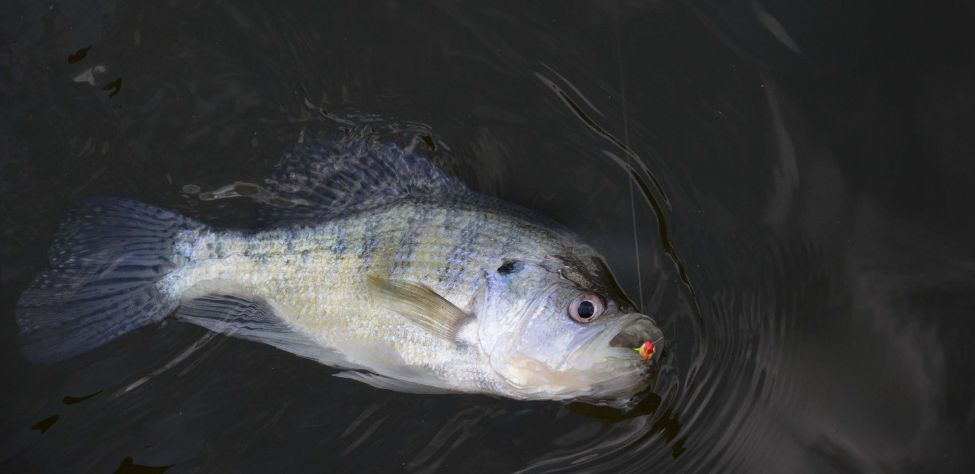
“I’ve seen some folks fishing down by the bridge, and they had some pretty nice-sized crappie,” my friend told me one day. We cast out into the warm water using jigs and corks and let our jigs wash downstream. After taking about 10 crappie, I decided to move further down the bank to see if I could locate a better place to fish. I noticed a narrow point jutting out into the current and forming an eddy pool on the backside of the point. I cast my jig out and allowed the cork to carry the jig around the point and into the eddy hole where the cork sank. My rod bowed, my line sang, and I brought a fat, 1-1/2-pound crappie to the bank. Quickly unhooking the fish, I threw out again – letting the cork drift the jig into the same eddy hole. Once more, the cork sank, and I took a nice crappie.
After putting my 15th fish on the stringer, my fishing buddy yelled from upstream, “Hey, John, you catching any fish? These up here have just about quit biting.” “Yeah, I’m catching a few,” I replied, sounding unexcited. In a few minutes, my friend came down the bank, pulled up my stringer, and said, “Golly, why didn’t you tell me you were catching these kinds of crappie? Move over. I’m going to catch me some of those slabs.” Anywhere you can find warm-water discharge in small creeks and streams that run into major reservoirs, often you will locate a honey hole for big, pre-spawn crappie in March and April.
Looking for more content? Check out our YouTube channel and watch “How to Fish for Deep Crappie in Winter Months” by John E. Phillips.
Expert Guidebooks on Crappie Fishing: Best Sellers
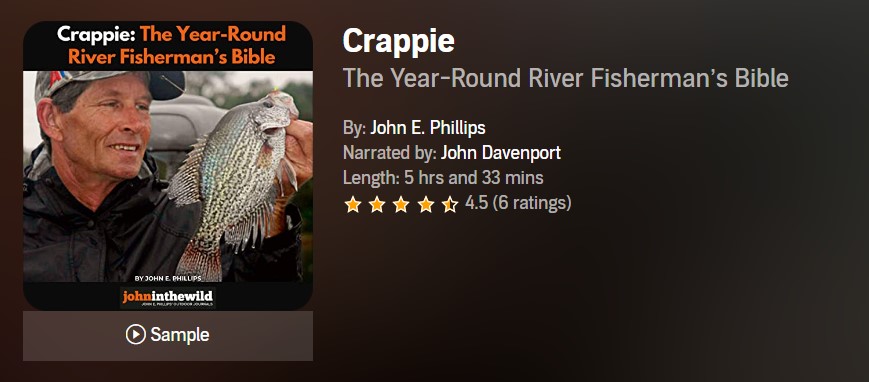
Fishing rivers for crappie and being able to find and catch speckled sides consistently has long been one of the mysteries in the crappie-fishing world.
“One of the reasons that river systems are so difficult to fish is because the water’s either rising or falling in them,” says Ott DeFoe, the 2019 Bassmaster Classic champion.
Rivers also are very susceptible to floods and droughts and constantly have current moving through them. Often fast current or slow current in rivers is created by rain or droughts upstream. When rivers flood, they can wash away fish habitat like logs, sunken trees, manmade brush piles and stake beds. But that’s the time when a river also creates new crappie hot spots that haven’t been available to the crappie or the fishermen before the flood.
Because river systems are so unpredictable, I’ve felt the best way to get the most useful information on how to fish rivers for crappie is to talk to numbers of anglers all over the nation to learn their best tactics.
In this book, I’ve gleaned crappie-fishing wisdom from three dozen crappie anglers and guides from a dozen states, who consistently catch crappie at all times of the year. The tournament crappie fishermen in this book fish most of the country at different times of the year on various river systems and lakes. And, these anglers use techniques you never may have considered, including:
- Setting up a casting ring with your electronics to keep you from getting too close to the crappie that are holding on underwater structure, while you’re fishing all the way around the structure;
- Buying an automotive laser temperature gauge to measure water temperature
- Evaluating the most-productive places to sink brush and other structure, according to prevailing wind direction, the crappie’s summer, fall, winter, and spring migration patterns, and other factors.
VERSIONS: AUDIBLE, KINDLE & PRINT
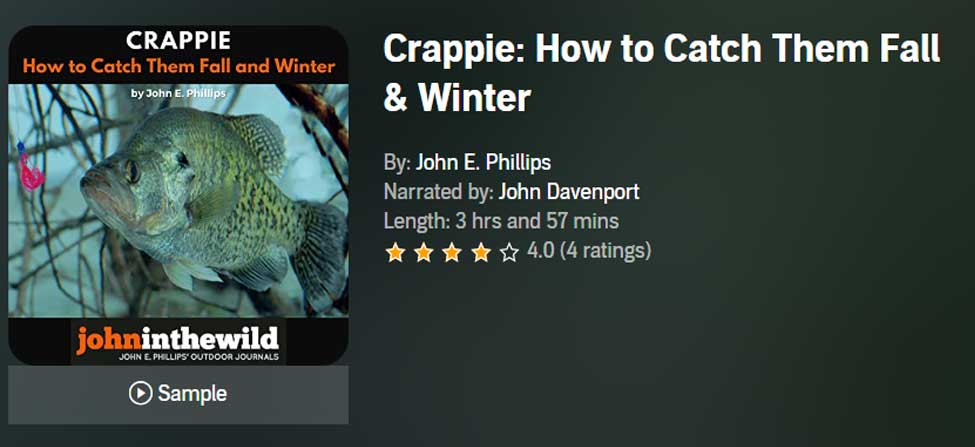
Crappie: How to Catch Them Fall & Winter
Yes, you can catch and eat crappie during the fall and winter months. Often, at many places, you’ll catch more and bigger crappies in the fall and winter than you do in the spring and summer. To learn where to find and how to catch cooler weather speckled sides, we’ve interviewed a wide variety of some of the nation’s best tournament crappie fishermen and guides.
Many of the individuals you’ll hear about in this audiobook are tournament crappie pros who travel the country to fish in crappie tournaments from New York to Florida and from Virginia to California. They use the latest crappie-finding equipment, the best poles, rods, reels, line, and the most-productive baits. Each of the people mentioned in this book has the ability to be dropped out of an airplane anywhere in the United States and catch crappie on any lake close to where they land that contains crappie.
From over 50 years of crappie-fishing experience, I’ve learned that you get the best advice by interviewing a large number of people who have different tactics and fish under various water, weather, and fishing-pressure conditions.
In this book, you will learn:
- How to spider-rig (slow-troll), which is one of the fastest-growing techniques for catching the most and biggest crappies in the shortest time
- How to catch crappie on crank baits and when and where using a crank bait is the most appropriate
- How to find areas of any lake that will hold large schools of crappies during the winter months – places you can return to time and again and expect them to be there
- Why competing in crappie tournaments is one of the quickest ways to learn how to catch more and bigger crappie faster
- Why and how to look for and catch the biggest crappie in a lake
VERSIONS: AUDIBLE, KINDLE & PRINT

Catch Crappie All Year: Fishing a Single Pole, Using No Boat, and Farming Crappie
I’ve interviewed some of the best crappie fishermen in the nation for my new audiobook, Catch Crappie All Year: Fishing a Single Pole, Using No Boat and Farming Crappie to learn how, where, and when to catch the most crappie with or without a boat while single-pole fishing. I’ve also included information on how to grow a crop of crappie to catch every day of the year. Although I’ve fished in fully rigged crappie boats costing $45,000 – $90,000-plus that can have up to 16 rods at one time to slow troll, I still enjoy….
- Watching a quill cork sink in a brush top
- Fishing with an ultralight spinning rod
- Reeling jigs or minnows along a grass line and feeling that thud when a crappie takes the bait
- Fishing with family and friends, even if we all can’t fit in one boat
- Participating in less-expensive and hassle-free yet highly-productive crappie fishing like single poling
I’ve tried to capture in this new audiobook the old way of crappie fishing with new twists and detailed tactics to aid you in catching crappie all year.
VERSIONS: AUDIBLE, KINDLE & PRINT
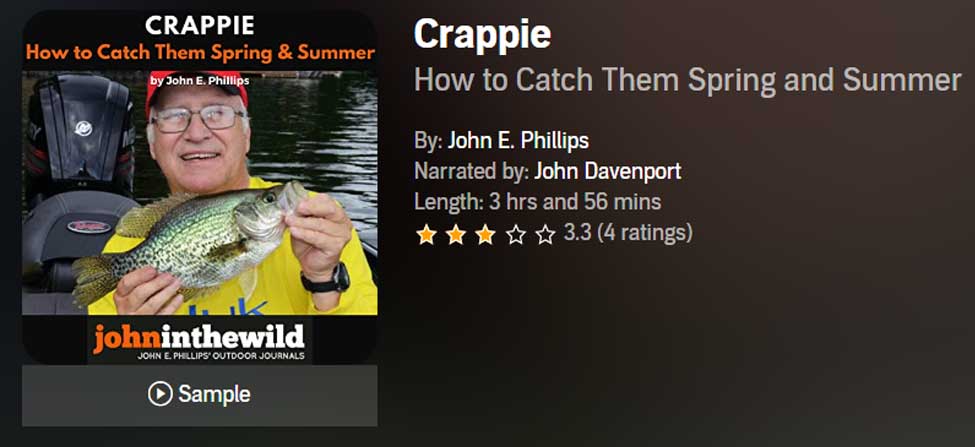
Crappie: How to Catch Them Spring and Summer
You can catch crappie all year long if you know where to find them and what techniques to use to catch them. However, crappie fishing is so technical these days, and we’ve learned so much about how to crappie fish because of the professional crappie-fishing circuits, that one book can’t hold all the information.
This book is the first of a three-part series on how, where, and when to catch crappie, with the best crappie fishermen in the nation. Many of these men have proven they are the best, because they’ve won crappie-fishing tournaments or been successful fishing guides for many years.
This audio version of Crappie: How to Catch Them Spring and Summer includes crappie pros like Ronnie Capps, who has won seven national championships and over $1 million with his partner Steve Coleman.
We also have Malcolm Lane, Stokes McClellan from North Carolina, Billy Blakeley from Reelfoot Lake, John Woods, Kent Driscoll, fishing biologist and professional basser Ken Cook, and many others. We asked the questions that crappie fishermen want answered about how to find and catch crappie during the spring and summer months, and these fishing tips are the result.
In the world of crappie fishing, no one man knows it all, and that’s why I’ve interviewed so many fishermen, asked so many questions, and tried to get so many answers for you about how to fish.
VERSIONS: AUDIBLE, KINDLE & PRINT
Tomorrow: Catching Springtime Ditch and Stump Crappie


